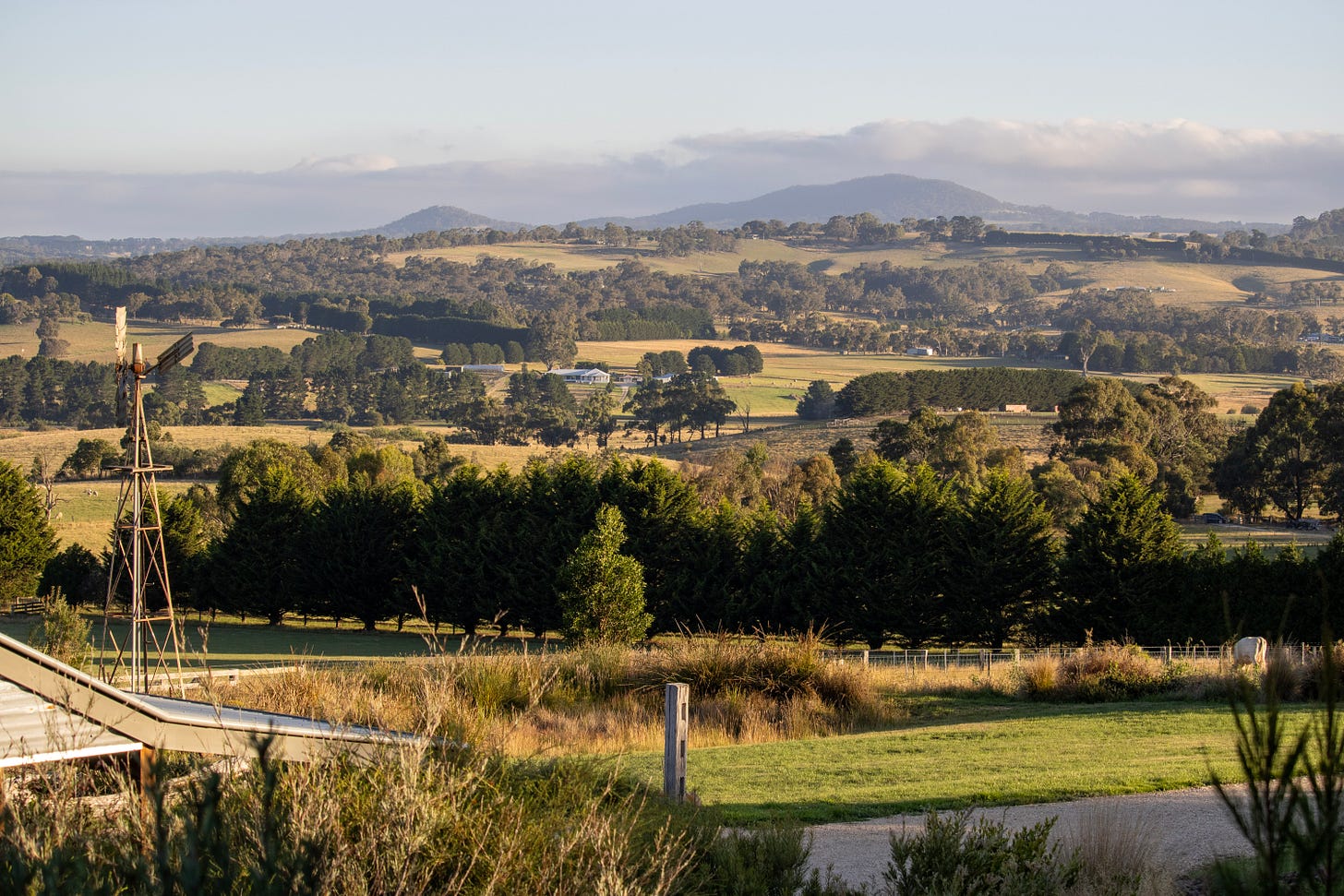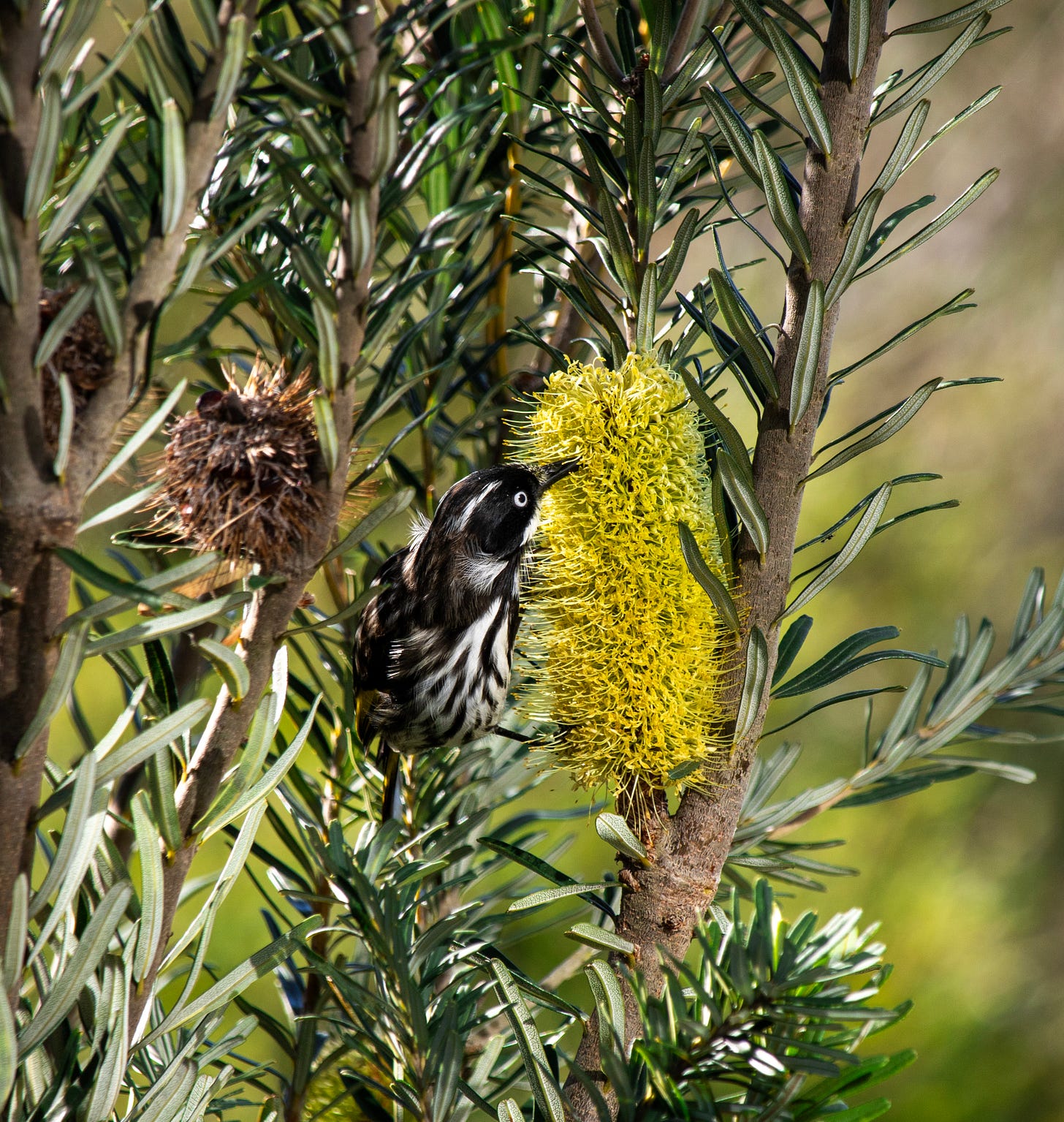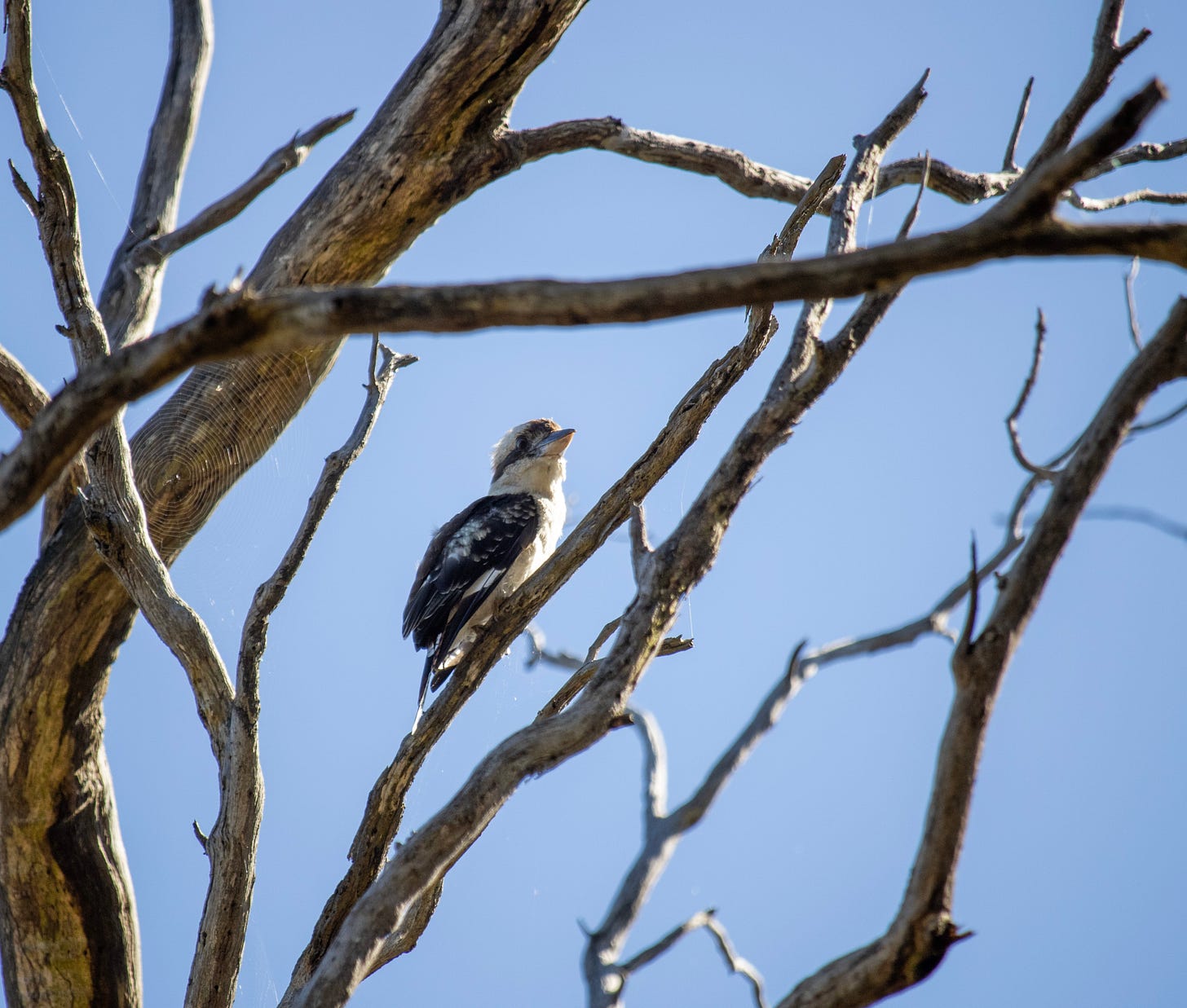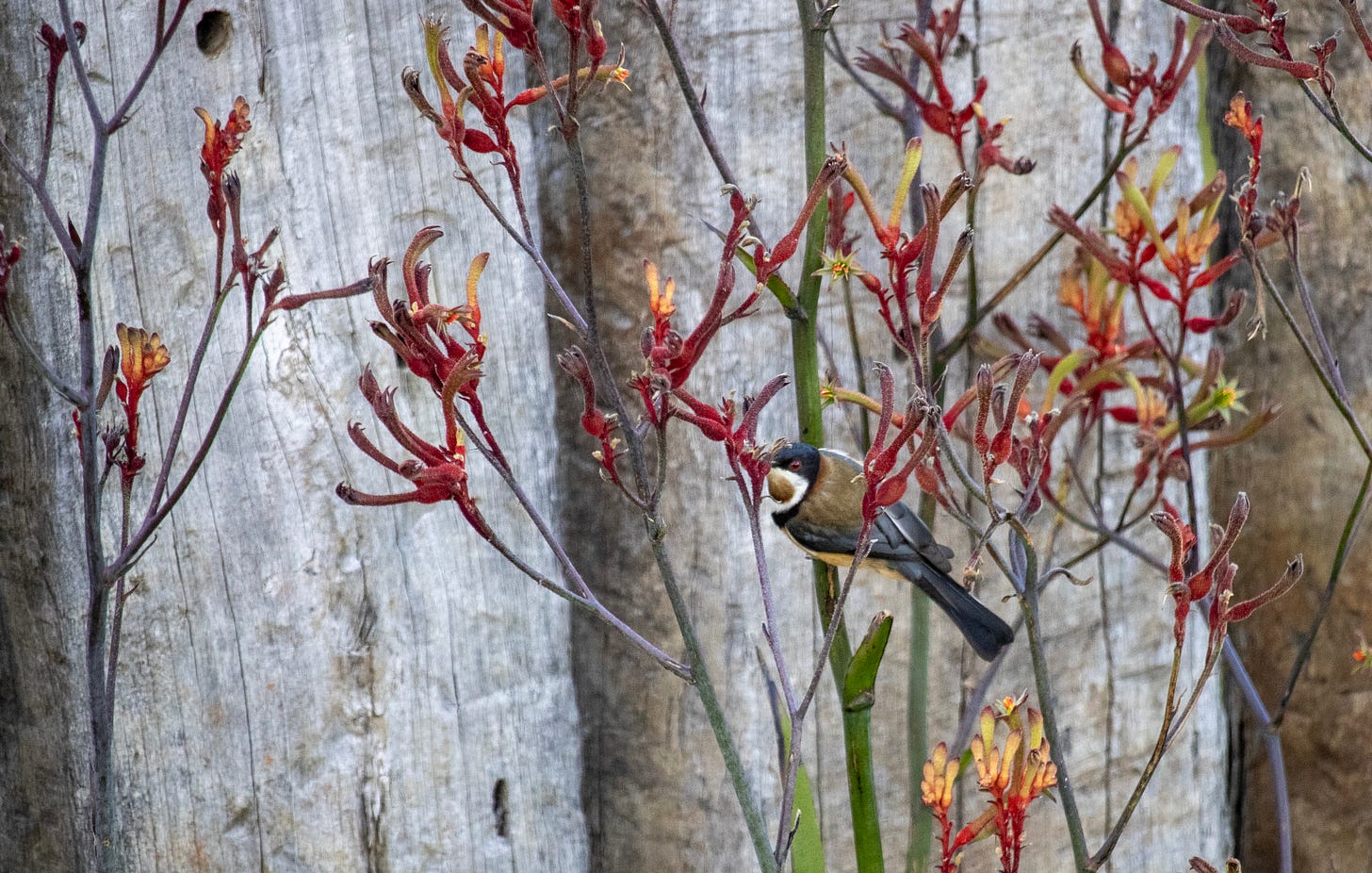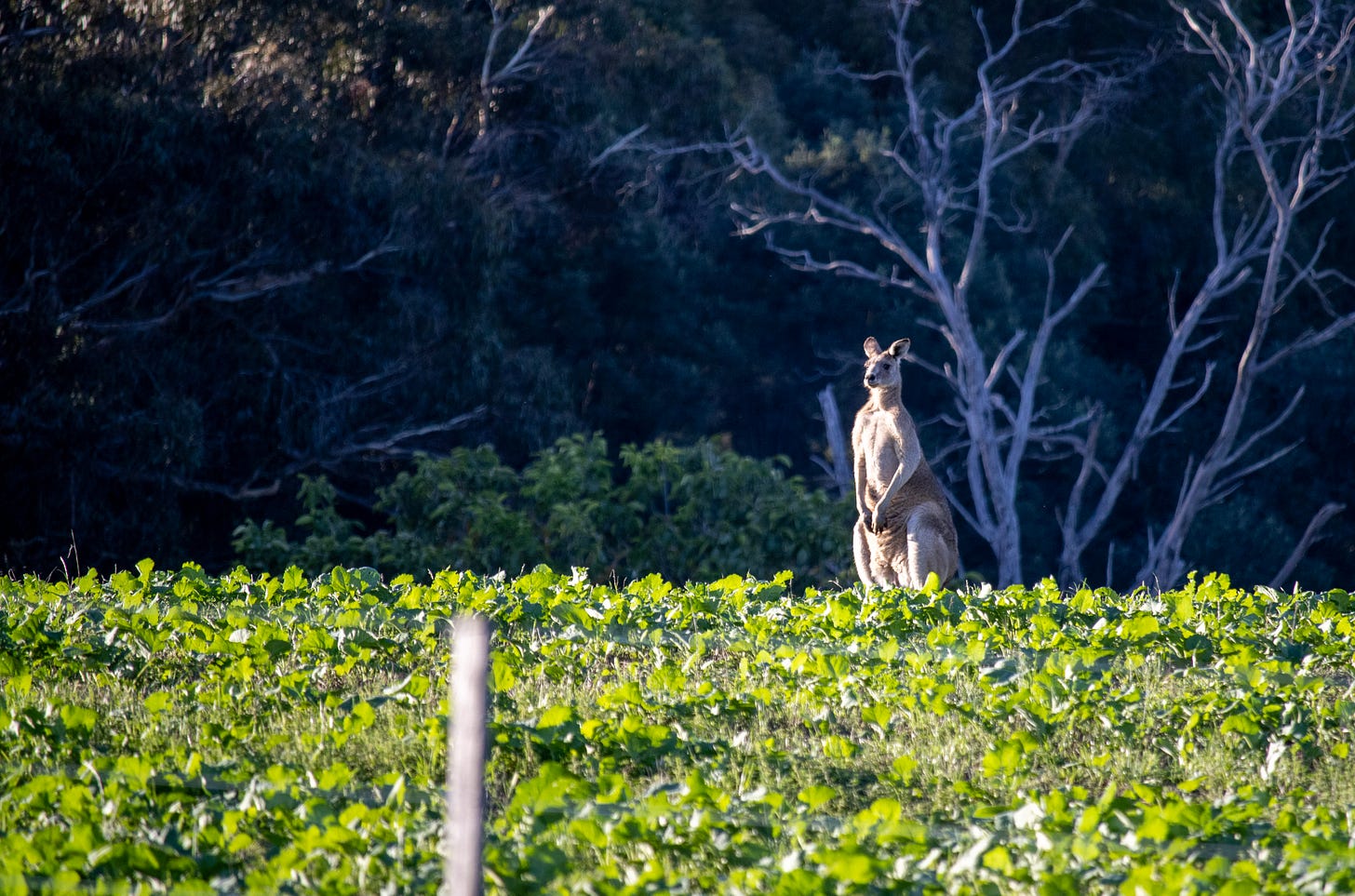Food for Thought: Farming with nature
From a Spanish fish farm to an Australian farm stay, and an excuse to share some holiday pics.
Welcome back to the first Six Chooks post for 2024! If you’re returning, I hope you had an enjoyable Christmas break and thank you for coming back - your support is why I love writing these posts.
If you’re new here, welcome! This is Six Chooks, where we talk about all things food and farming, and how to create and participate in a food system that’s better for people and the planet.
I’ve spent the last 3 weeks immersed in nature and farmland; first at my parents’ Tasmanian woodland property, a vibrant and lively forest among luscious dairy country, and second at a farmstay in Cobaw, nestled in the Macedon Ranges of Victoria.
After several weeks in nature, one thing really stood out to me at the farmstay - just how much life there was. I had the pleasure of spending several days, among other things, sitting on the back deck quietly observing and waiting for something to point my shiny new camera lens at (yes, this article is an excuse to share my holiday photos).
And I didn’t have to wait for long.
The farm was a small sheep-grazing property tucked into the side of the Cobaw Bushland Reserve, and what struck me was how good a job the owners had done of extending nature from the bushland reserve onto their property.
Every paddock was lined with a row of mature trees, providing countless benefits for both nature and livestock - habitat for native birds and insects, shade and shelter for the sheep in the hot sun, a natural windbreak. Surrounding the accommodation was a number of extensive gardens with native flowers and shrubs, providing food and habitat for bees, butterflies, honeyeaters, kookaburras, fairy-wrens, magpies, rosellas, and thornbills.
This wildlife is undoubtedly providing benefits back to the farm (I’ve previously written about the many benefits of the birds and the bees).
We even saw hares and kangaroos grazing the paddocks in the late afternoon. This raises a question for me, and probably for a lot of farmers - why would you want hares and kangaroos eating the crops and improved pastures you’ve put down to feed your sheep?
To give a different perspective, I’d offer up an anecdote from a fantastic book I read over the holidays, The Third Plate by chef Dan Barber. In the book, Barber recounts a visit to a cutting-edge, nature-friendly fish farm in Spain called Veta La Palma. Veta La Palma is an extensive farming operation, meaning it operates over thousands of acres but in a way that allows (or even relies on) nature to thrive alongside the commercial operation.
Barber described coming across a large pond with thousands of bright pink flamingos feeding in the shallow waters of the fish farm - feeding on the same fish that the farm intended to sell. Rather than seeing this as a pest issue or a loss of production, Veta La Palma biologist and tour guide Miguel Medialdea viewed this scene as the picture of success - a farm that works so intimately with nature that it can function both as a commercial success but also a wildlife sanctuary. The ecosystem is so self-sustaining that they don’t even feed the fish as the ponds contain forms of life spanning the whole food-chain.
Veta La Palma lose up to 20% of their fish stock each year to birds, but this isn’t viewed as an issue. Instead, it’s a natural part of the ecosystem they’ve created which provides benefits back to them in terms of the health of the system, the cleanliness of the water, and the flavour of the fish. Thanks to the environmentally conscious approach, the farm actually pumps out cleaner water into the ocean than what it takes in from inland rivers, much of the bacteria, chemicals, and minerals broken down by phytoplankton and turned into food for fish and birds. They’re using nature to cleanse contaminated water from farms upstream with less-than-ideal practices.
Now, Veta La Palma may seem like an extreme example, and I can sympathise with a fish farmer who doesn’t want to see 20% of their stock in the belly of a flamingo. But I think the principals are sound and this little farm in Cobaw shows how the same principals can be applied on a smaller scale.
Rather than working against nature, there are a myriad of benefits available to farmers (and home gardeners) who choose to work with nature, providing food and habitat for insects and wildlife that will pay you back in spades.
As we head into 2024, it’s a good opportunity to think, how could I work to incorporate nature into my life, garden, or farm?
It might be planting native flowers or trees, lining a fence row with hedges, setting up a pollinator shelter or even just supporting local farmers who consider these things on their land.
It’s time to embrace a little bit of nature in our food system.




